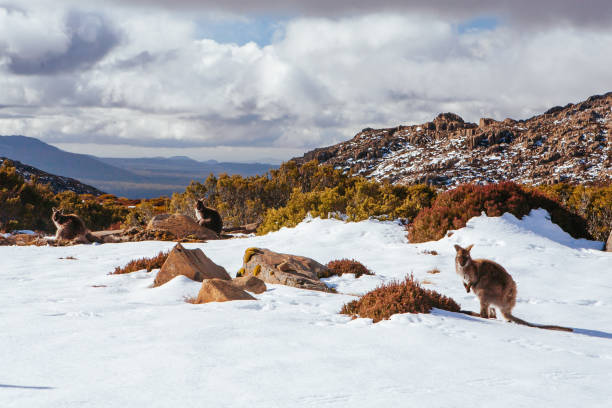Understanding the Relevance of Snow in Australia for Agriculture and Tourist
While Australia is typically related to sun-kissed coastlines and dry outback, it additionally boasts a wide range of snowy towering regions. The snow that blankets these areas is far more than a picturesque landscape function. It functions as a lifeblood for the nation's farming and a driving force for a lucrative tourism market. As we explore this unusual intersection, the possible effect of changing climate patterns on Australia's snowfall and its succeeding results come to be an engaging emphasis.

The Unexpected Snowfall: Australia's Alpine Regions
When wintertime capes the world, Australia's Towering regions don a white mantle of snow, a phenomenon that seems practically paradoxical in this dominantly sun-baked land. Unlike the stereotyped picture of Australia as a land of deserts and coastlines, these areas use a stunning and surprising contrast. The Australian Alps, stretching across New South Wales, Victoria, and the Australian Resources Region, obtain more snowfall than Switzerland. This unexpected wintertime heaven supplies a distinct ecosystem, providing an environment for numerous indigenous types and a snowy play ground for winter months sporting activities fanatics. The annual snowfall, although not as plentiful as in some nations, is a vital element of Australia's environment diversity and plays a considerable role in the country's farming techniques and tourism market.
Wintertime's Bounty: Snow's Payment to Australia's Water Resources
Despite its rarity in the wider landscape of Australia, snow in the Alpine areas plays an important function in the nation's water resources. Acting as an all-natural reservoir, the snowpack shops water throughout the cool months, gradually releasing it into rivers and dams as it thaws in warmer seasons. This procedure makes certain a consistent supply of water, aiding in the stablizing of the country's water cycle. This is particularly important for Australia, a continent regularly tormented by dry spells. Furthermore, the snowmelt feeds into the Murray-Darling Container, a lifeline for numerous neighborhoods in the southeastern components of the nation. Without the bounty of winter snow, Australia's water this content resources would be dramatically strained, impacting both the population and the atmosphere.
White Blanket, Environment-friendly Area: The Impact of Snow on Australian Agriculture
Although much less noticeable, the influence of snow on Australian agriculture is considerable. Snowfall in the high nation functions as a natural kind of watering, gradually melting and providing a stable supply of water to lower-lying farmland. This water-rich setting fosters the development of robust crops, adding to the nation's farming efficiency. Moreover, snowfall boosts dirt health and wellness by introducing dampness and trapping nutrients, which are gradually launched as the snow melts. This procedure enriches the dirt, promoting the development of healthier, a lot more resilient crops. Additionally, snow cover works as a protective covering, shielding the ground against serious winter season temperature levels that can otherwise harm crops. Thus, the role of snow in Australian agriculture is both crucial and diverse.

Cold Cash: Snow Tourism and Its Economic Significance in Australia
While the worth of snow to Australian agriculture is usually undervalued, its payment to the nation's tourism market is without a doubt significant. The snow-laden tops of Australia's alpine areas attract a flurry of travelers every winter months, contributing millions to the nationwide economic climate. Therefore, the economic importance of snow tourist in Australia prolongs much past the inclines.
Future Forecast: Environment Modification and Its Prospective Effects on Australia's Snowfall
As the world grapples with the truth of environment change, so too should Australia ponder its prospective results on the country's snowfall. Present scientific models forecast a decrease in Australian snowfall, with potentially serious effects on both agriculture and tourist. In some locations, the snow period could be shortened by as much as 80 days by 2050. Such modifications intimidate the stability of Australia's ski sector, which contributes dramatically to the neighborhood economic climate. Less snowfall could also impact the country's agricultural sector, as snowmelt plays an essential role in watering plants. The possible effects of these adjustments highlight the urgency of this content climate modification reduction efforts, both in Australia and internationally.
Conclusion
In final thought, snow is an essential aspect of Australia's agricultural and tourism industries. The impending hazard of environment adjustment increases worries about the future of Australia's snowfall patterns, potentially interrupting these significant financial sectors.

When winter capes the globe, Australia's Alpine regions wear a white mantle of snow, a phenomenon that appears nearly paradoxical in this dominantly sun-baked land.Despite its rarity in the broader landscape of Australia, snow in the Alpine areas plays a crucial visit here role in the country's water sources. Without the bounty of winter months snow, Australia's water sources would certainly be dramatically strained, affecting both the environment and the population.
Thus, the economic importance of snow tourism in Australia prolongs far beyond the slopes.
In conclusion, snow is a crucial component of Australia's farming and tourism markets. Does Australia Get Snow.